 |
Yavapai County Native Naturalized Plants |
 |
|
Plant Communities |
||
| Home | Plant Communities | Plant List | Search Forbs and Subshrubs | Search Grasses | Search Woody Plants | Additional Resources | About this Website |
Click on Images or Plant Community Name for a Plant List |
||||
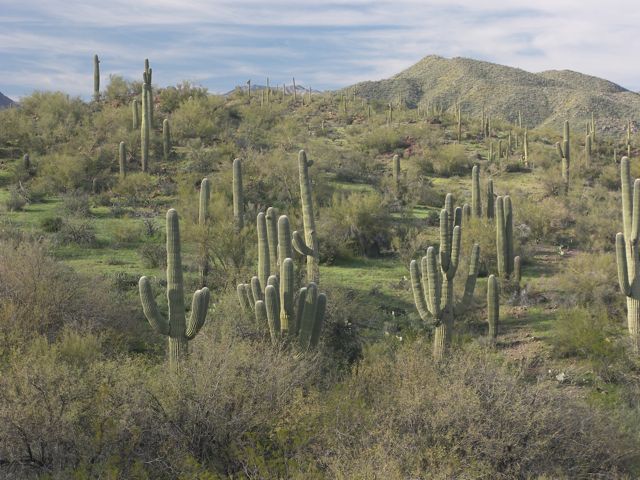 Desert Scrub |
Desert scrub is found at the lowest elevations in Yavapai County, typically below 3500 feet. The vegetation is a scrubland or woodland. The spaces between the small trees or shrubs are filled with layers of shrubs, cacti, succulents, grasses, and in years of adequate moisture, annuals. The common trees are palo verde, cat-claw, mesquite and ironwood. Common shrubs are whitethorn, creosote and bur sage. Cacti are an important vegetation type and include saguaro, several species of cholla and many others. In the upper limits of this plant community crucifixion thorn is common. Bush muhly is probably the most palatable grass. Tobosa grass occurs in low places where runoff waters collect. |
|||
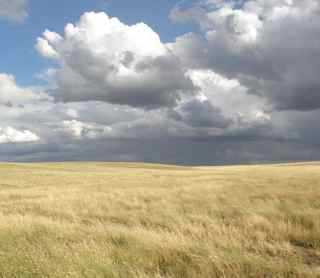 Grasslands |
Grasslands occur largely at elevations between 4,000 and 5,000 feet. Typical areas occur in the Verde Valley, north of Prescott, in Chino and Lonesome Valleys, and along Interstate 40 between Ash Fork and Seligman. In climax plant communities, blue grama, tobosa, black grama, hairy grama, and side-oats grama predominate. Ring muhly and three-awn may be present but make up only a small part of the total vegetation. |
|||
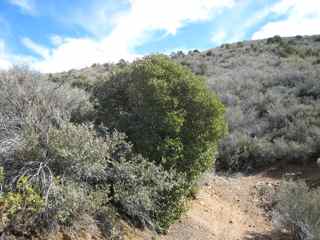 Interior Chaparral |
Interior chaparral is a shrub dominated plant community occurring most often between the elevations of 3,000 and 5,500 feet. An extensive stand of chaparral lies in the area between Cherry and Dewey and extends south past Humboldt and Mayer. Other typical areas are Iron Springs Road (northwest of Prescott), Wilhoit, and Camp Wood. Scrub oak often dominates our chaparral plant communities. Other shrubs include manzanita, lemonade berry, mountain mahogany, Apache plume, catclaw, cliffrose, ceanothus, and silktassel. Grasses may be present but are less abundant than in other vegetation types. The most common are blue grama, side-oats grama, black grama and wolftail. On the poorer sites, three-awn and annual bromes may be common. |
|||
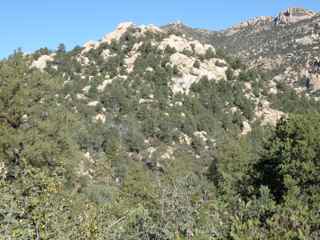 Pinyon Juniper Woodlands |
Extensive stands of pinyon juniper woodlands occur in Yavapai County. Typical stands can be found north of Chino Valley, Ashfork, south of Seligman, and in much of the country between Sedona and Stoneman Lake. These woodlands often produce an under story of blue grama intermixed with side-oats grama, western wheatgrass, and tobosa. Winterfat, cliffrose, and silktassel may be locally abundant. As grass stands become thinner, weeds such as annual goldeneye and clubflower fill in the openings. Snakeweed and threadleaf groundsel may become common. In areas where the pinyon juniper canopy has closed, grasses and herbaceous plants become rare to nonexistent. |
|||
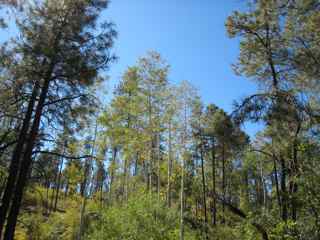 Montane Conifer Forest |
Dense stands of ponderosa pine are found above 5,000 feet elevation where precipitation is greater than 16 inches per year. Other important trees include Gambel oak, Arizona walnut, aspen, Douglas fir, and white fir. Grasses may include blue grama, western wheatgrass, Arizona and sheep fescue, mountain and screwleaf muhly, junegrass, muttongrass, and dryland sedges. These areas are primarily used for summer range. |
|||
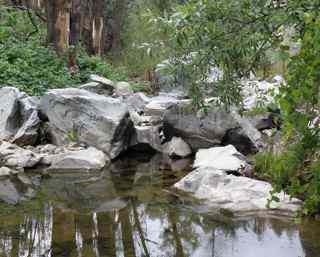 Riparian |
A riparian area is a land and water interface. In the Southwest, riparian areas may have above-ground or below-ground flows of water. Above ground flows usually occur during the wet seasons of winter and the summer monsoons. Ephemeral or intermittent streams are the dominant stream type. Riparian areas are found at all elevation levels. The transition between riparian and arid regions are often abrupt transitions. | |||

Disturbed Areas |
A disturbed area is a locality which has been impacted by natural events; fire, wind, flood, insects and also by human activities such as agriculture, forest harvesting or construction of buildings and roads. |
|||
|
Arizona Cooperative Extension Yavapai County 840 Rodeo Dr #C Prescott, AZ 86305 (928) 445-6590 |
Version 8.0
http://cales.arizona.edu/yavapaiplants/PlantCommunities/PlantCommunities.php Last Updated: Dec 13, 2022 Content Questions/Comments: Email Matt Halldorson Legal Disclaimer |
|